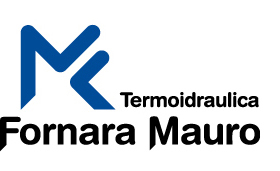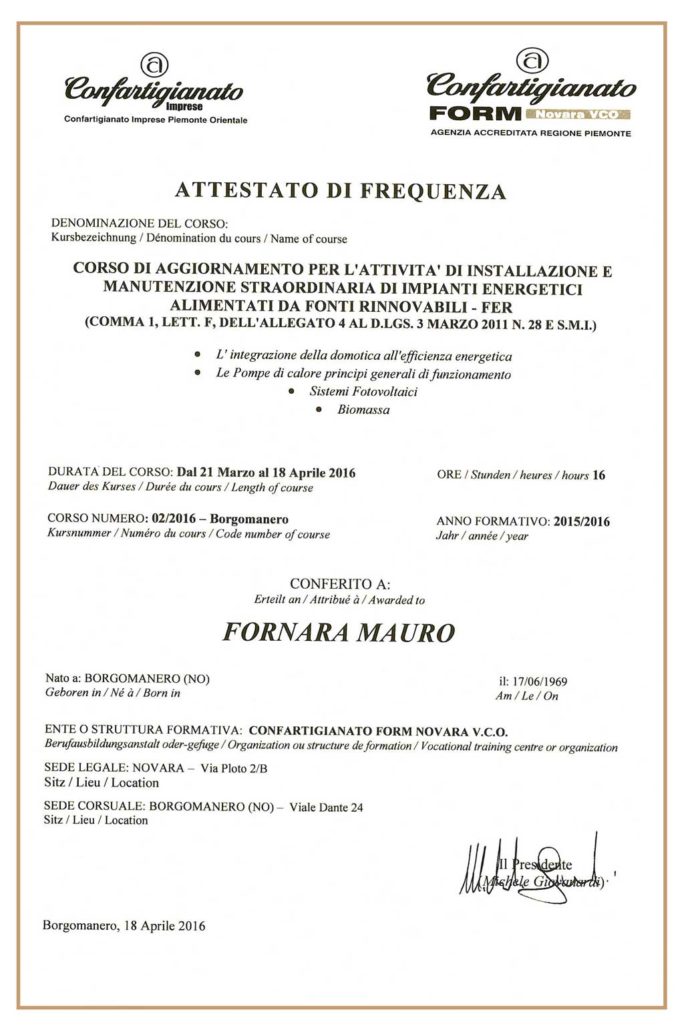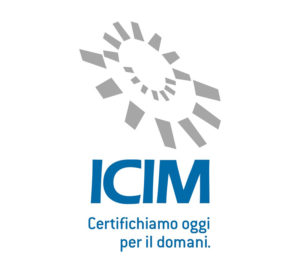Today, reducing energy consumption is not only an economic necessity but also a moral obligation. Environmental issues and paying attention to saving energy are gaining increasing attention, to the point that local and national administrations have passed legislation to prevent the waste of power and to encourage the use of energy-saving equipment and appliances.
Undoubtedly, among the most important advantages of renewable resources are that when used they create no polluting emissions and that they are inexhaustible. Therefore, using these energy sources will not affect their future availability while their value lies in providing energy while minimising environmental impact.
Heating systems using heat pumps and hybrid systems
Heat pumps
A heat pump is a device that can transfer thermal energy from a lower temperature source to a higher temperature source, using different forms of energy, generally mechanical.
Heat pumps work thanks to several physical principles, but they are classified according to their application (heat transfer, heat source, heat sink or cooler).
Heat pump performance is calculated on the basis of its “yield”, which is expressed by the coefficient of performance, “COP”, the ratio between energy yield (heat supplied to the source involved) and energy consumed (usually electric, for example, required by a compressor). A COP (coefficient of performance) value of 3 indicates that for each kWh of electricity consumed, the heat pump moves heat equal to 3 kWh from or to the source involved.
There are two types of heat pumps:
- air-to-air, which extracts heat from air and feeds it inside or vents it outside a building, depending on whether it needs to heat or cool the environment;
- air-water, which is used in environments with the distribution of heat in water (this second solution is however less common).
Hybrid systems
A hybrid system is a device (or a system) in which there are several heat generators powered by different energy sources, usually a fossil fuel and a renewable source.
With the heat pump in operation, the hybrid heating system exploits the free heat in the air to produce heat and to cool. This reduces the use of fossil fuels and limits CO2 emissions.
There are compact hybrid systems on the market that are ideal solutions for new homes when an integrated heating system, for cooling and domestic hot water production, is planned, pursuant to Legislative Decree 28/2011 (on the use of renewable energy sources). Set up with hydraulic and electric operation, combined with heat pumps and solar energy, these reduce the space required for the systems and achieve effective solutions in small and large living spaces.
Rainwater recovery systems
Over 97% of the water on earth is seawater, which is not potable by humans. Most of the remaining 3% of the fresh water is made up of ice. Only 0.3% of the fresh water is available for human consumption. This percentage continues to be diminished due to the discharge of pollutants into the water, irregular rainfall and, unfortunately, wasted water, which is sometimes inevitable in daily use.
The recovery of rainwater is a precious contribution toward reducing the waste of potable water. It can also provide considerable cost savings (up to 40%).
Rainwater can have the following uses:
– Washing machine;
– Gardening;
– The WC, since rainwater does not favour the formation of lime scale.
Rainwater recovery systems comprise the installation of underground polyethylene tanks whose size depends on the actual needs of the household, a filtering system and a central control unit.
Before installing the system, you should inquire at your council or local authority about local regulations (if they exist) on the treatment of rainwater for domestic use (use of anti-bacterial systems, separation of rainwater from drinking water etc.
Solar power... using the sun’s heat
Thermal solar panels produce hot water and can supplement a heating system.
There is a distinction between thermal solar panels and photovoltaic panels. Thermal solar panels heat water for daily use without the using gas or electricity.
They use the heat from the sun for heating or to produce hot water, which can reach up to 70°Cin summer, which is much higher than the normal 40°-45°C normally required for a shower. Within certain limits, these are therefore an effective substitute for electric or gas heating to generate hot water for washing dishes, showering, bathing etc.
A thermal solar panel (or solar collector) consists of a radiator that absorbs the heat of the sun’s rays and then transfers it to the hot water tank. The circulation of the water from the tank to the tap is achieved using natural or forced circulation. In the latter case, the solar panel supplements an electric water pump.
The number of thermal solar panels required is determined by the user’s needs and the climate of the location. A one-square-metre thermal panel can supply an average of 80-130 litres of hot water per day at an average temperature of 40°. The average usage of hot water is about 30-50 litres per day per person, so a one-square-metre panel should meet the hot water needs of 1-2 people.
Heated water is kept in insulated tanks to guarantee a certain degree of autonomy.
Thermal solar panels cannot be a substitute for a boiler but they can be a complementary system that reduces the consumption of gas or electricity required for water heating.
Geothermal... using the sun’s heat
A geothermal system is characterised by the use of the energy found underground. Starting from a depth of 20 metres, the temperature underground is constant regardless of whether it is day or night, or of the season. It is the flow of heat underground that regulates the temperature.
There are two types of geothermal energy: “classic” and “low enthalpy”.
The former is related to the exploitation of geological or volcanic anomalies that heat water, which is applied to the production of electricity or for heating purposes.
The latter, “low enthalpy”, refers to the exploitation of the subsoil as a thermal reservoir from which heat is extracted during the winter and to which it is added during the summer. In this way any building, anywhere on earth, can be heated and cooled without using a classic boiler in winter or a cooler in summer.
The limit for the installation of this type of system is set by the need to use low temperature heat distribution terminals, i.e., radiant panel systems, which operate at 30-35°C, and fan coils, which can operate at variable temperatures.
If you own a traditional radiator system, in which the water temperature reaches 65-70°C, the solution is to replace the radiators with innovative heating convectors for residential heating, which reduce energy consumption, without neglecting the modern needs of comfortable warmth and well-being. These convectors can heat with high thermal yields even using low-temperature hot water, produced by geothermal heat pumps.
It is worth installing geothermal systems in new construction projects and full refurbishment projects, or to replace fuel oil or LPG boilers. These are not recommended if the system is already powered by methane.
The size of the whole system can be determined by a Thermal engineering company
Cogeneration
The term Cogeneration refers to the practice of producing combined electrical and thermal energy, with the purpose of consuming less primary energy than what would be consumed by the separate production of both types of power.
It appears clear that this combined production of energy makes sense where there is the need for both types of energy, and in these situations cogeneration is a valid solution that offers savings of energy and money.
Cogeneration is achieved by using a heat engine system, which converts the energy released by combustion into mechanical energy (and from this into electricity), and which generates energy by recovering the “waste” heat from the previous process.
The application of cogeneration is still a contentious issue, with the crux of the problem being how much energy is actually saved, when maintenance costs are also considered.


